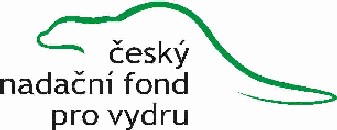

|
česky / english
Activities
FaceBook
FB group:
Náš soused netopýr Poll
Kterou z aktivit pro veřejnost byste uvítali rozšířit? Celkem hlasovalo 44926. Váš hlas byl započítán! |

Bat population monitoring 1) Winter censusMonitoring bat populations has a long tradition in the Czech Republic but in the past, it mostly concerned underground hibernacula only. Bats began to be censused regularly in the territory of CZ in 1969. We chose 15 caves and abandoned mines for continuous observation for a five years period 1969–1973 in northern and central Bohemia, Moravian Karst, southern Moravia, and in eastern Slovakia. Each locality was visited once in February. All bats were captured and after banding released them in situ. In CZ, mass banding of hibernating bats was terminated in 1980. From 1981 we censused bats in underground shelters without banding or other disturbance except by short-time illumination. Time of census was later extended to January, February and early March depending on locality. We continue yearly monitoring of hibernacula in 800–900 localities until present. After population decrease in 70-ties, steady increase from the beginning of 80-ties was observed (Fig. 1). Now the highest numbers of some species ever found in the most of localites (at least twice the number than at the beginning of monitoring programme). 
Changes in numbers of bats from old mines near to Malá Morávka in the Jeseníky Mts. For the whole time span, 1970-2010, a significant inscrease in numbers of M. myotis, R. hipposideros was recorded. 

2) Nursery coloniesThe shelters of summer colonies are monitored once a year, theoretically within the time from the end of pregnancy to the middle of lactation. Due to differences among species, the term of monitoring has been fixed to the time span from the beginning of June till the middle of July. The census is taken visually without marking or otherwise disturbing the bats, digital photographs have been applied during the last years to minimize its duration, in particular when large colonies (clusters) are concerned. Nevertheless, all localities declared as pSCI of Natura 2000 have been monitored. In addition to the number of bats, young and old separately, air temperature and technical status of buidings as scheduled repairs, the size and situation of apertures and any threats to bats. If possible, the census of bats emerging at their evening departure was made if the shelter was inaccessible to humans. n total, maternity colonies of 15 species and one couple of species have been monitored within the years 2005-2009. Monitored colonies ( XLS in czech) 
3) Monitoring by ultrasound detectorsBat detector monitoring has been made since 2005 in 10 regions that have been selected due to their well-preserved habitats and, accordingly, high diversity of bats. In every region, six representative localities, each with three habitats have been chosen, resulting in 18 line transects per region. Bat activity has been monitored by bat detectors with time expansion system and the signals have been recorded by minidisk walkmans Following habitat types have been included into the monitoring: intravillan, forest, meadow, periphery of a growth (ecotone), field, rocks, stagnant and running water. At least 17 species (or species couples) were recorded by bat detector monitoring in 2005-2009. M. daubentonii, M. brandtii/mystacinus, N. noctula and P. pipistrellus are the most abundant species that have been annually detected in almost every region. Maximum changes in the composition of species were recorded in the middle moravian alluvial forest where 47% of species were not annually recorded, followed by the Moravian karst and Czech Paradise (41% of species). In the southern Moravia, in contrast, relatively constant species composition was recorded with 88% of species detected every year. 
4) Netting at swarming sitesSuch localities were selected that have been known as swarming sites or sites where the bats probably gather for social rather than foraging reasons. Previous netting at some of the localities revealed several species as abundant that are rarely found elsewhere or, although they form big colonies, their shelters are rarely found (Myotis bechsteinii, M. brandtii, M. daubentonii, M. mystacinus, M. nattereri, M. emarginatus, P. pipistrellus and P. pygmaeus). Netted samples can contribute to the knowledge of population structure in these species. In each of the nine localities, three netting nights have been performed at three seasons: (i) late April – early May (spring movements), (ii) first half of July (lactation, weaning), (iii) late August – early September (autumn movements, mating). Every net-night lasts from the time of sunset to that of sunrise. Males of the species R. hipposideros, M. emarginatus, M. bechsteinii, M. daubentonii, M naterreri, E. nilssonii, E. serotinus, P. auritus and B. barbastellus were found to prevail in most localities. A balanced sex ratio was recorded in M. brandtii, M. mystacinus and M. alcathoe Species diversity differs among localities (7 - 18 species). 
|













